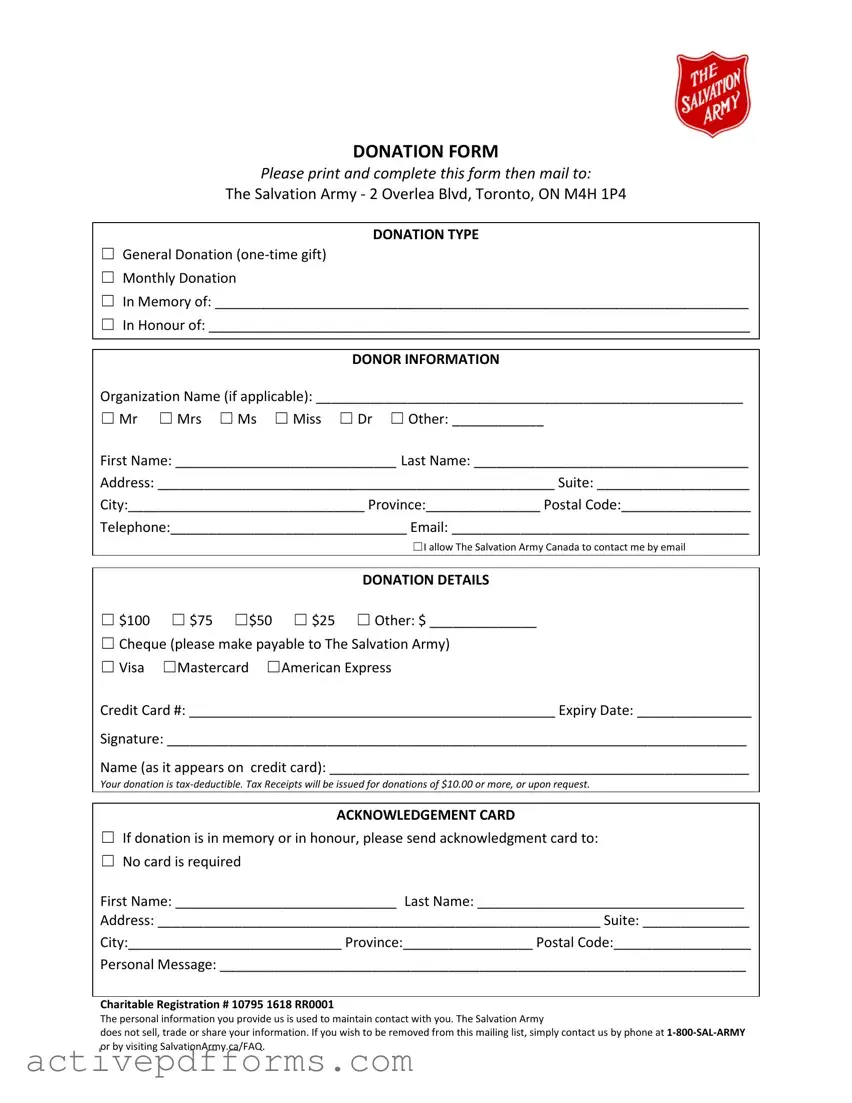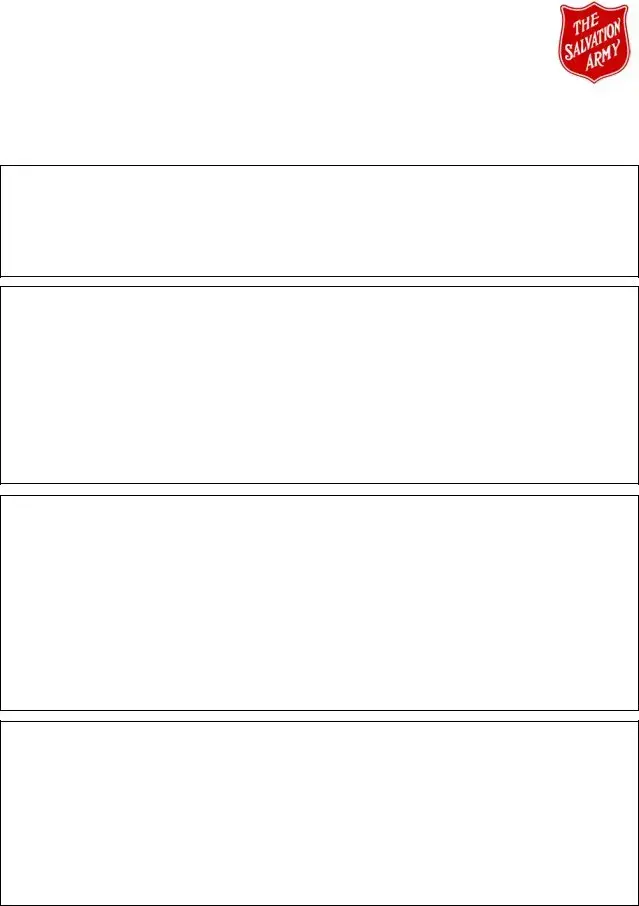DONATION FORM
Please print and complete this form then mail to:
The Salvation Army - 2 Overlea Blvd, Toronto, ON M4H 1P4
DONATION TYPE
☐General Donation (one-time gift)
☐Monthly Donation
☐In Memory of: ______________________________________________________________________
☐In Honour of: _______________________________________________________________________
DONOR INFORMATION
Organization Name (if applicable): ________________________________________________________
☐ Mr ☐ Mrs ☐ Ms ☐ Miss ☐ Dr ☐ Other: ____________
First Name: _____________________________ Last Name: ____________________________________
Address: ____________________________________________________ Suite: ____________________
City:_______________________________ Province:_______________ Postal Code:_________________
Telephone:_______________________________ Email: _______________________________________
☐I allow The Salvation Army Canada to contact me by email
DONATION DETAILS
☐ $100 ☐ $75 ☐$50 ☐ $25 ☐ Other: $ ______________
☐Cheque (please make payable to The Salvation Army)
☐Visa ☐Mastercard ☐American Express
Credit Card #: ________________________________________________ Expiry Date: _______________
Signature: ____________________________________________________________________________
Name (as it appears on credit card): _______________________________________________________
Your donation is tax-deductible. Tax Receipts will be issued for donations of $10.00 or more, or upon request.
ACKNOWLEDGEMENT CARD
☐If donation is in memory or in honour, please send acknowledgment card to:
☐No card is required
First Name: _____________________________ Last Name: ___________________________________
Address: __________________________________________________________ Suite: ______________
City:____________________________ Province:_________________ Postal Code:__________________
Personal Message: _____________________________________________________________________
Charitable Registration # 10795 1618 RR0001
The personal information you provide us is used to maintain contact with you. The Salvation Army
does not sell, trade or share your information. If you wish to be removed from this mailing list, simply contact us by phone at 1-800-SAL-ARMY or by visiting SalvationArmy.ca/FAQ.

